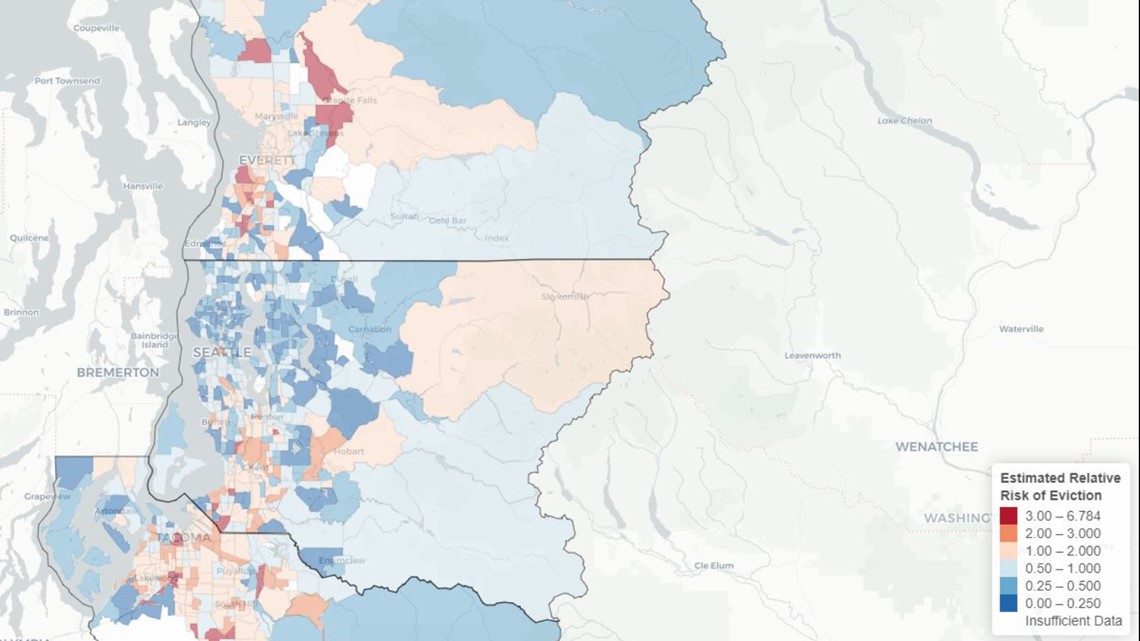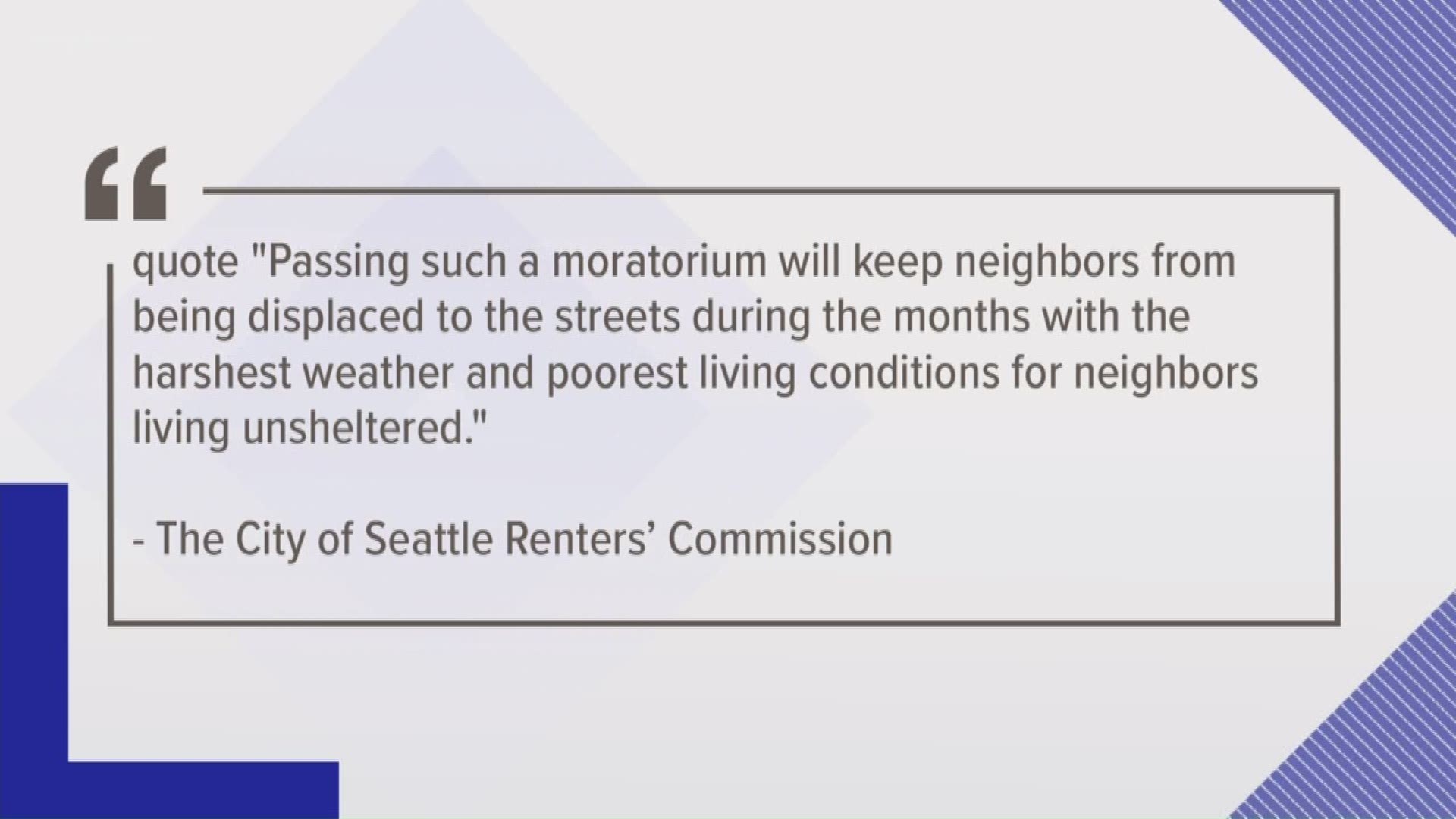SEATTLE — Editor's note: The above video was published at an earlier date.
Evictions due to lack of affordable housing and rising rent costs contribute to the homelessness crisis.
An extensive study by the University of Washington (UW) was created in 2018 to measure and analyze the issue of evictions in western Washington using court records, census data and housing market trends
As a part of the study, UW created an interactive map in King, Pierce, Snohomish and Whatcom Counties that show a neighborhood's relative risk of eviction. The maps compare the probability of eviction occurring for a renting household in a given area compared to the probability of eviction across the four-county study area.
You can zoom in and hover over a neighborhood for more information and analysis.


Between 2013 and 2017, 1 in 55 (1.8%) Washingtonian adults faced an eviction, according to UW.
According to UW, nine neighborhoods in Pierce County and eight neighborhoods in Snohomish County had the highest estimated relative risk of eviction, with relative risks ranging between 3% and 6.78%.
The UW study also found a huge racial disparity of African American adults who faced eviction filings.
When comparing the court records for three counties to their respective 2012 to 2017 adult population, UW found that 9% of black adults in King County and 17% of black adults in Pierce faced an eviction within a five-year period.
Black adults are evicted 5.5 times more than white adults in King County and 6.8 times more in Pierce County, according to UW researchers.


Research shows that low-income households are most likely to be evicted where stagnant wages and inadequate welfare are unable to compete with increases in rent, according to UW.
According to UW, 80% to 90% of evictions are due to falling behind on rent where over 1/3rd of the defendants in the study were contributing over 80% of their income to rent.
In 2017, 46% of Washington households were rent burdened (contributing more than 30% of your income to rent) with about half of those households contributing more than 50% of their income to rent. This means that thousands of households are constantly on the verge of losing their home to an increase in rent or eviction due to rent burden.


